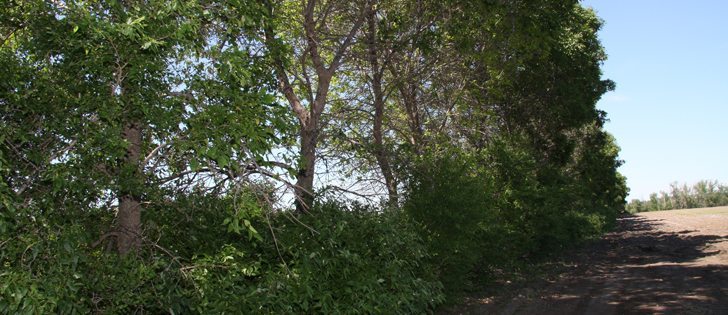Indian Head centre for sale | Interested parties visit while government looks for agreement
INDIAN HEAD, Sask. — Four interested parties have already arranged to visit the Prairie Shelterbelt Centre in Indian Head as the federal government looks for a buyer for the tree production and distribution facility.
Ottawa wants a purchase agreement or partnership in place by Aug. 31.
Henry de Gooijer, manager of Agriculture Canada’s Agroforestry Development Centre, told a May 16 public meeting attended by about 175 people that interest has come from commercial nurseries, First Nations and non-profit organizations.
An employee buying group is another possibility.
Read Also

VIDEO: Case IH reveals new Optum tractor at Agritechnica 2025
Case IH reveals its new Optum tractor at Agritechnica 2025.
Others, which he described as “tire kickers and even a few vultures,” have also had questions about the site.
De Gooijer said the site visits will give potential purchasers a better understanding of the facilities but wouldn’t provide specific details.
“Three of those groups or parties are at the stage of initiating analysis of a business case,” he said.
All are looking at a cost-recovery or profit model.
The centre has provided free trees to farmers and rural landowners for 111 years. It costs the federal government $3 million annually, including salaries.
Assistant deputy minister Jamshed Merchant said the money is only a small part of Treasury Board’s decision.
The agriculture department was asked to cut 10 percent of its overall budget, or about $250 million per year, as part of a government-wide effort to cut the federal deficit. It will maintain agroforestry research at Indian Head.
Merchant said the government, which wants to decrease its footprint, looked at whether the shelter belt program was an appropriate use of taxpayer dollars.
“The time is right for the federal government to step out of the business of providing free trees,” he told the meeting. “This decision is not at all based on the quality of work being done.”
Providing trees was critical during the 1930s, 1940s and 1950s, said Merchant, who began his career as a soil conservationist. The free trees were incentive for farmers to spend the time and money to establish them and keep them growing.
“Over time it became a real question: is this an appropriate role for the government of Canada to be in?” he said.
Lorne Scott, reeve of the Rural Municipality of Indian Head and a former provincial environment minister, said government should have looked beyond economics to the other benefits of shelter belts.
For example, species at risk such as ferruginous hawks use the trees.
“If we look at birds as a whole, two out of three species are declining and three out of four here on the Prairies are declining,” he said.
Carbon sequestration, wildlife plantings and controlling erosion are other important benefits of trees.
“This is a broad based public service that can only be delivered by the government,” he said to loud applause from the crowd.
Bruce Neill, a former shelterbelt centre manager, said the government should have looked at a compromise rather than cut the centre completely. He said 80 families have been affected.
“The decision has been made to terminate (the centre) and to take all the savings out of this one area,” he said.
Merchant said it isn’t yet known if the agroforestry staff will remain at the location south of the Trans-Canada Highway or move to the Indian Head Experimental Farm north of the highway at the town’s eastern boundary.
The federal public works department will look after the sale of the buildings, land, equipment and other assets.
The federal government will stop funding and operating the shelter by Dec. 31, 2013, regardless of whether a buyer or partner is found by the deadline.
















